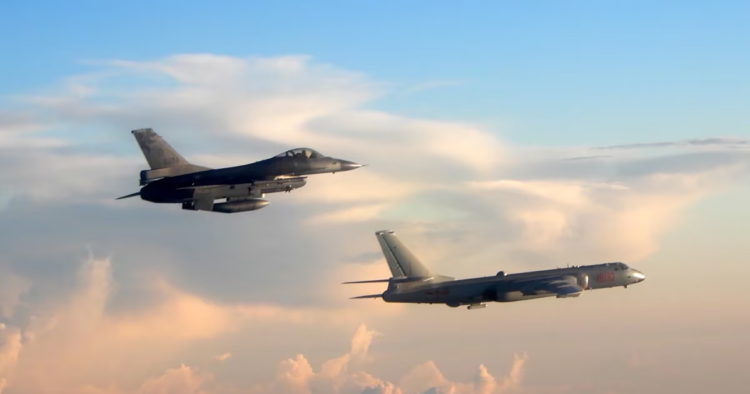In a dramatic escalation of tensions, Taiwan’s defense ministry reported a historic high of 66 Chinese military aircraft spotted near the island within just 24 hours. This marks the highest number observed this year and follows recent exercises conducted by Beijing in nearby waters. China considers Taiwan a part of its territory and has repeatedly asserted its willingness to use force to reunify the island with the mainland.
According to Taiwan’s defense ministry, the Chinese aircraft included 56 that crossed the sensitive median line in the Taiwan Strait, a narrow waterway separating Taiwan from China. Some of these aircraft came as close as 33 nautical miles to Taiwan’s southern tip, heightening concerns over military provocations.
This surge in Chinese military activity comes shortly after Taiwan detected Chinese aircraft heading towards the western Pacific to conduct exercises with the PLA aircraft carrier Shandong. Military experts speculate that these maneuvers are a response to recent political developments, including increased support from the United States toward Taiwan.
In response to the heightened military presence, Taiwan’s defense ministry stated that it has taken necessary actions to respond to these activities, although the specifics of these actions were not detailed. This latest display of force from China surpasses a previous record set in May when Beijing deployed 62 military aircraft and 27 naval vessels around Taiwan.
Experts describe China’s tactics as “grey zone” strategies, which fall short of outright warfare but aim to test and exhaust Taiwan’s military capabilities. These tactics have included frequent deployments of jets, drones, naval vessels, and even coast guard ships around Taiwan’s waters.
Taiwanese President Lai Ching-te has expressed willingness to engage in dialogue with China, despite being labeled a “dangerous separatist” by Beijing. However, such gestures have so far been met with limited response from Chinese authorities, who continue to increase pressure on Taiwan through military shows of force.
ALSO READ: “China Warns NATO Against Provoking Confrontation Over Its Ties with Russia”
As tensions persist, neighboring countries like Japan and the Philippines have also been drawn into the situation. Japan confirmed sightings of Chinese naval vessels, including the Shandong, sailing southeast of Miyako Island, while reports from the Philippines suggested a joint China-Russia exercise in the Philippine Sea.
In response to these developments, the international community continues to monitor the situation closely, amid fears that any escalation could destabilize the region. China’s Ministry of Foreign Affairs reiterated its stance that Taiwan is an integral part of its territory, emphasizing its commitment to safeguarding national sovereignty and territorial integrity.
The situation remains fluid as both sides navigate a delicate balance between military posturing and diplomatic overtures, with Taiwan seeking to defend its sovereignty amidst increasing pressures from Beijing.

















Comments